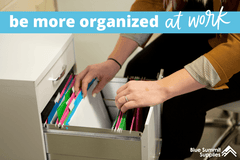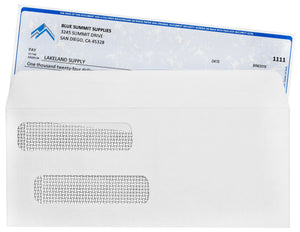Do you have issues with ageism in your workplace? Ageism at work includes any stereotyping or discrimination against people or groups based on their age.
You may think your workplace is free and clear of discrimination, but ageism is an issue many workplaces struggle to overcome. Discrimination by age can come in subtle forms. You may have communication policies that only cater to the needs of a single generation of workers, or you may lack age diversity across your business teams.
Below we’ll discuss signs of ageism at work and how to manage generational differences in the workplace.
Signs of Ageism at Work

Lack of Age Diversity
Lack of age diversity is present in many companies, and it could mean your business is missing out on a wide range of perspectives. Does your team lean towards one demographic more than another? What’s the average age of your team?
Diversity in a business brings a broad spectrum of skills, ideas, and experiences to your team for a more well-rounded approach to any problem. Diversity of age is no different. Your team must reflect the many perspectives that each generation can bring to a business.
Employ a range of ages and generations (Gen Z, Boomer, etc.) to ensure age diversity throughout your workforce. Do what you can to become an attractive place to work for any age group.

Not All Teams Are Equal
Even if your workforce as a whole is diverse in age, you may find that diversity in your specific business teams is lacking. If your sales team are all from the same generation, they won’t reap the benefits of having many generational perspectives, which can hinder problem solving and create barriers between your teams.
Ensure age diversity within each of your teams so that every team has a full selection of perspectives.

Communication Problems
Ageism at work creates communication problems within the office. If your team struggles with communication, ageism may be to blame.
Consider your communication policies and how they are used by employees. Do your older employees struggle to keep up with Slack communication? Do your younger employees respond to each of their emails?
To improve communication within your office, help your employees understand how each of their teammates prefers to communicate. Learning about these differences will help employees communicate more effectively and avoid miscommunication. Look at your communication policies and ensure they are fair to everyone in your workplace, no matter what their age or how they prefer to communicate.
Generational Differences In The Workplace Chart
There are four different generations being employed today: the Baby Boomers, Generation X, Generation Y (Millennials), and Generation Z.
Each generation differs in their values and how they work due to the historical chapter they grew up in. These different perspectives are a major asset to a business, but can also cause instances of ageism in the workplace.
It’s important to remember that the following differences are a general guideline—not every employee will fit the exact description of their generation. Keep an open mind and get to know your employees individually before attaching an age stereotype to them.
Use the generational chart below to ensure age diversity across your business and throughout each of your teams.
Attributes |
Baby Boomers |
Generation X |
Generation Y |
Generation Z |
|
Birth Date |
1946-1964 |
1965-1980 |
1981-2000 |
1995+ |
|
Experiences |
Vietnam War, Cold War, Watergate, Moon landing, Woodstock |
Fall of Berlin Wall, rising divorce rates, MTV, cable television |
Y2K, 9/11, reality TV, diversity, President Obama |
Climate change, economic downturn, school shootings, President Trump |
|
Aspirations |
Financial compensation, job security, homeownership |
Freedom, Work-life balance |
Flexibility, meaningful work |
Financial security, structure |
|
Technology |
Television, telephones |
Computers, video games, email, text messages |
Mobile technology, smartphones, tablets, social media |
3D printing, video messaging, wearable tech, smart technology |
|
Communication and Work Style |
In person, formal, physical paper, hard-working |
Email and text messages, voicemail, self-reliant |
Mobile communication, instant messages, collaborative |
Immediate, face to face, technology is ingrained |

Working With Baby Boomers
Technological changes won’t come as easy for your Boomer employees—they aren't used to the speed with which technology evolves, so adapting can take time and patience. Ensure that you leave adequate time for them to learn a new technology or online program in the office. Offer additional training for tech-heavy businesses.
The good news is your boomer employees are hard workers who are dedicated to their job positions. They will work hard every day and be loyal to your business for many years.

Working With Generation X
Members of Generation X are self-sufficient and self-reliant, which means they may need encouragement to collaborate with others. They will have an easier time tackling new technology than Boomers, but they still may struggle to adapt to the fast pace of changing technology.
Generation X is the first generation to desire freedom within their work. As a business, you can offer more freedom by trusting your employees and offering flexible hours for those who want them.

Working With Millennials (Gen Y)
Millennials or Generation Y are well-versed in adaptation. They will take on new technologies with ease and adapt to changes in the workplace as they come. Gen Y employees are collaborative and are interested in learning something new.
Millennials value freedom, flexibility, and work-life balance, but they also need to feel fulfilled at work. Their adaptable approach to work means they are more likely to move from one job to the next. Make sure your business provides opportunities for millennials to grow.

Working With Generation Z
Members of Generation Z are just beginning their careers in the workforce. Technology comes naturally to them; it’s ingrained in their lifestyle. They may find it difficult working in teams with people who have little experience with new tech. Encourage them to use their knowledge to help others in the workplace.
Due to their experience growing through the financial crisis and watching the devastating effects of climate change, Generation Z is looking for structure and financial security from their workplace. There’s still a lot to learn about this generation, as well as the impact they will have on the workforce. Ensure your business stays relevant and appealing to Generation Z in the years to come.
How To Manage Generational Differences In The Workplace

Customize Your Managing Approach
Don't use a one size fits all approach to managing your employees. Each employee has different strengths and weaknesses, and what works for one employee may alienate others. Customize your managing style and the ways you communicate in the office to prevent instances of ageism.

Team Building Activities to Bridge Gaps
Team building activities can help bridge the gap between the different generations in your workplace. Encourage your employees and your teams to get to know each other on a deeper level to establish a cohesive workplace. Members of similar age groups will naturally seek each other out, so ensure there are opportunities for group activities that include everyone.

Prioritizing team building in your workplace can help businesses boost morale, increase collaboration, and improve engagement. Learn Why Team Building Is Important and How We Do It.

Recruit For Age Diversity
Ensure your business has something to offer everyone, no matter what their age. Be flexible in your approach. If an employee wants more security from their job, prioritize that for them. If another candidate values flexibility more than financial compensation, consider remote work opportunities for them. If work-life balance is important to a candidate, let them work four days a week instead of five.
As you adapt your recruitment policies, consider the needs and desires of the emerging Generation Z workers.

Ensure Teams Are Age Diverse
Take a close look at your business teams and evaluate their age diversity. Every generation brings a unique insight or skill to the table. Try to balance out your teams in every way possible, including by age.

Technology and Change Management
Remember that not everyone will adapt as quickly to changes around the office, and changes to your office technology will be tougher on some employees than others. Offer added training for those who need it and encourage younger or more tech-savvy employees to lend a hand to those who may need extra help.

Learn About Communication Styles
Learning about how each person in the workplace prefers to communicate will assist with managing generational differences in the workplace. The teams that work best together understand each other’s strengths, weaknesses, and communication styles. Consider trying a work personality test so that team members can learn a little bit more about themselves and their co-workers.
Prioritizing team building in your workplace can help businesses boost morale, increase collaboration, and improve engagement. Learn Why Team Building Is Important and How We Do It.

More from Blue Summit Supplies
💡 How to Make Office Friends and Get Along with Coworkers
💡 The Importance of Time Management and How to Optimize Your Time
Do you love office talk as much as we do? Follow our office supplies blog for the latest office trends, team building strategies, product comparisons, and more.
If you have any questions or want to talk to someone about office supplies, send us an email or connect with us on Twitter, Facebook, or Instagram.
 For more informative articles about office supplies, subscribe to our email newsletter!
For more informative articles about office supplies, subscribe to our email newsletter!
Never fear, you won't begin receiving daily sales emails that belong in a spam folder. Instead, we promise a fun weekly roundup of our latest blog posts and great finds from across the web. And if you lose interest, it's always easy to unsubscribe with a single click.










